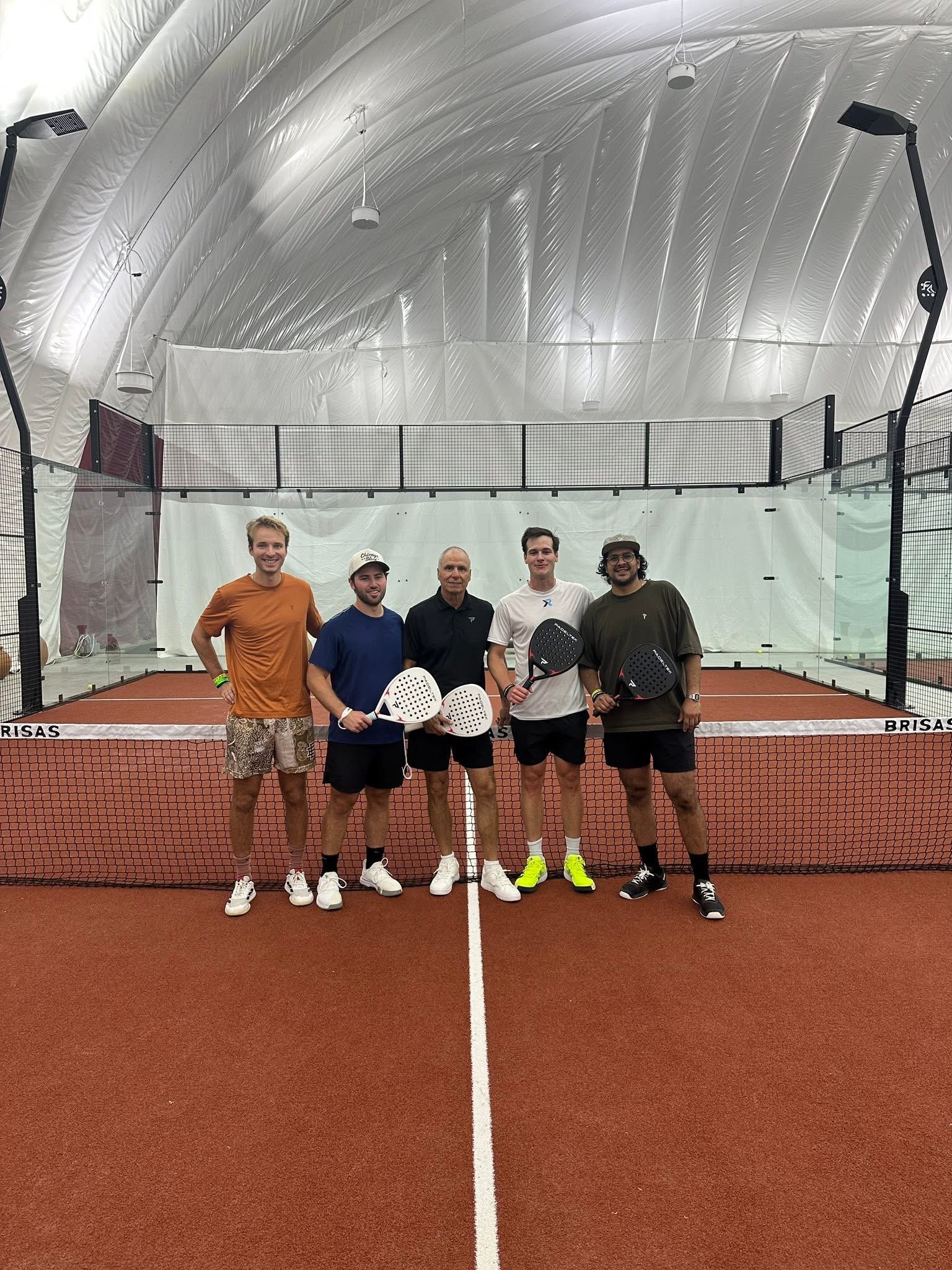The Paddle Whisperer: Chuck Vietmeier on Innovation and the Future of Pickleball
Pickleball is full of players who bring passion to the court. But behind the scenes, there are people shaping how the game feels with every shot. One of those people is Chuck Vietmeier, a veteran in racquet sports and now Senior Product Manager at United Pickleball Paddles (UPP), the parent company of ProXR Pickleball, Paddletek, and Boundless Pickleball.
I’ve had the privilege of knowing Chuck for many years, and I can honestly say he’s one of the most supportive colleagues I’ve ever worked with. Hardworking, down for anything, and endlessly collaborative, he’s the type of person who makes you want to do your best—and somehow makes the work fun along the way. Sitting down with Chuck for our special Paddle Guide felt like catching up with an old friend who also happens to be a walking encyclopedia of paddle design and innovation.
Our conversation wasn’t just a Q&A—it was a look inside the mind of someone who has spent decades shaping racquet sports, and what he believes players need to know about paddles today.
From Courts to Creation
Where it all started—Chuck Vietmeier was on the court long before pickleball paddles became his canvas.
Chuck’s story starts on the tennis court. A Hall of Fame collegiate player turned coach and teaching pro, he was always looking for ways to improve equipment—not just for his own game, but for anyone who picked up a racquet. That natural curiosity led him into the world of sports manufacturing, where he helped develop breakthrough technologies in strings and grips before stepping into the world of pickleball.
“I’m just a competitive person,” Chuck told me. “I love playing these sports, and I love improving them. That’s what’s kept me in this industry for so long.”
When he first crossed paths with pickleball, it wasn’t through a big splashy tournament or TV feature. It was through something as small—yet vital—as grips. Major paddle brands were quietly buying thousands of grips originally made for tennis racquets and cutting them down to fit pickleball paddles. Chuck realized then that this was more than just a passing trend.
“That was the lightbulb moment,” he said. “If companies were buying grips at that scale, paddles were next. And once we got into paddles, it was like starting fresh—a blank page to build whatever we wanted.”
His instincts were right. Trips to Nationals when it was in Casa Grande, Arizona and later the U.S. Open in Naples, Florida, confirmed what he already suspected: pickleball wasn’t just growing—it was about to explode.
What Makes a Paddle Great?
If you ask most players what they want in a paddle, you’ll hear buzzwords: power, spin, control. But Chuck takes a different angle.
“Players underestimate how much shape matters,” he explained. “You’ve basically got three: wide-body, hybrid, and elongated. Each one plays differently. If you’re quick at the kitchen, a standard shape is probably best. Tennis background? You might like elongated. And the hybrid sits right in the middle.”
When it comes to construction, he’s quick to cut through the marketing noise.
Chuck Vietmeier (right) with friends at Pickleball Night at Wrigley Field—an exhibition match sponsored by MLP’s Chicago Slice.
“A lot of it is hype. At the end of the day, paddles are built within the same standards. What really matters is the core, the sweet spot, the weight—and now, dwell time.”
The concept of dwell time—borrowed from tennis—is becoming the new frontier in paddle design. And it’s something Chuck sees as essential for the next stage of innovation. By increasing the time the ball sits on the paddle face, players gain more control and spin. For advanced players, it means they can swing harder without sacrificing accuracy.
Cutting Through the Noise
With hundreds of paddle brands flooding the market, it’s no surprise players feel overwhelmed. Chuck’s advice is refreshingly simple: try before you buy.
“Don’t underpay for a dead paddle that you’ll grow out of. And don’t overpay just because of marketing buzzwords. Demo. Find the paddle that actually fits your game. The same way you’d test a tennis racquet, you should be testing paddles.”
For players just getting started, he stresses that fit matters more than hype. “Some paddles are great for baseline drives, others for quick hands at the net. The only way to know is to hit with them.”
And I’ll echo that myself (because I mean I did learn from the man himself, Chuck, lol!): I’ve been telling players this for years. Just because your partner swears by a paddle doesn’t mean it’s right for you. The beauty is, companies are making this easier—offering demos, 30-day trials, and return programs so players can actually test before committing.
Because at the end of the day, your paddle should fit you.
Looking Ahead: The Next Wave
Chuck (middle) at Brisias Club at Long Island City, NY, celebrating the launch of Padeltek.
When asked what’s next for paddles, Chuck smiled like someone holding a few secrets. While he won’t spill specifics about upcoming ProXR or Paddletek projects, he did share where the industry is headed.
Innovative cores: New materials and blends are being tested to change rebound and feel.
Ergonomic grips: Expect to see more customization and shape options designed for comfort and control.
Faster product cycles: “In tennis, it used to take 12-18 months to develop something new. In pickleball, you don’t have that kind of time. If you’ve got a good idea, you need to move fast before six other companies do.”
But he also emphasized balance: “Not every trend is worth chasing. Sometimes you need to follow if that’s what players want. The key is knowing when it’s a fad, and when it’s the new standard.”
Brand Loyalty and the Human Side of Innovation
One thing Chuck has noticed at UPP and Paddletek is the depth of loyalty among players.
“There are people who trust the brand so much, they’ll buy the latest paddle without hesitation. That’s a huge responsibility. It means we need to keep delivering paddles that are not only innovative but reliable.”
And when he sees someone on court with a paddle he helped design?
“I don’t say much. But I remember when it was just a sketch on my computer screen. It’s pretty cool to see it in someone’s hands, making their game better.”
That humility is pure Chuck. For someone who has spent decades shaping the sport we love, he still talks about innovation as if he’s just getting started.
A Career That Speaks for Itself
In a market overflowing with brands and big promises, Chuck Vietmeier’s voice cuts through with clarity: focus on what works, trust your feelings, and never stop learning.
Having the privilege of working alongside Chuck for five years, I know firsthand how hard he works, how generous he is with his time, and how much he cares about the people around him.
Pickleball needs people like Chuck. People who innovate not for attention, but for the love of the game and the players who step on the court every day.
And if you’re holding a paddle that feels just right in your hand—there’s a good chance Chuck’s work helped pave the way.




